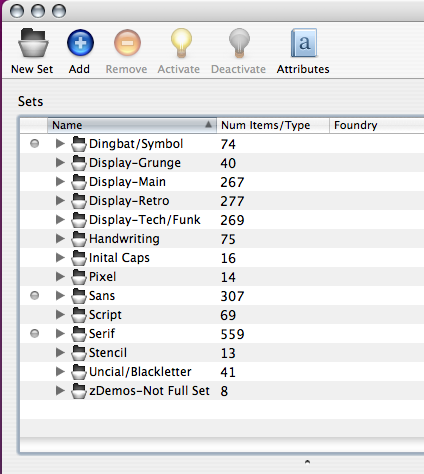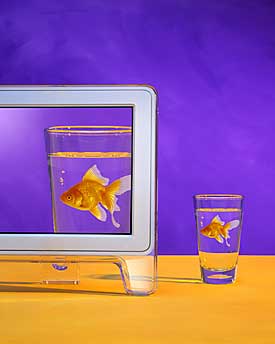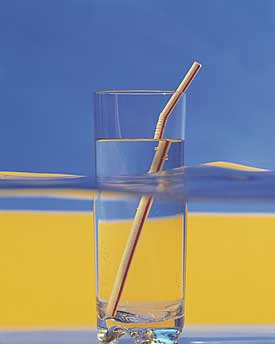Where ideas come from
A question was asked on LinkedIn.com about brainstorming sessions. Since this is one of my favorite business activities, I though I'd share my answer here (with some added bits) as well.
This is my process for conducting a brainstorming meeting:
1. Solidly define the question. This sounds like a no-brainer, but I think many times it's glossed over and the results don't really hit the sweet spot. Anyone you who have read Douglas Adams Hitchhiker's Guide to the Galaxy series knows what I'm talking about. The answer is 42, right?!
2. Set the stage. During the first part of a brainstorming session, there can be no editing or negative commenting on any ideas thrown around. A fun idea is to give everyone a Nerf ball, and whenever someone makes a negative comment about an idea, the rest of the group throws the balls at them. THIS IS THE MOST IMPORTANT PART! Obviously not every idea that is said will be valid, but with the right environment those ideas will trigger other ideas, and people will be more creative when they feel safe from criticism.
2. Using a whiteboard or large post-its, write up each thing said. Using a mind-mapping approach might help, showing how ideas are related. It depends on what kind of people you have, though. Some people respond best to just random listings. There will be several lulls during this period. When you get to a lull, try implementing a triggering activity, like word-association, or asking to visualize a juxtaposition (i.e.-what would this product be like if it was a military person). Sometimes, I'll throw out an obviously outrageous idea, just to get a laugh and that will start people back thinking again. The goal of this phase is quantity not quality.
3. Editing. After everyone is worn out & tired. Take a break, then go back to the ideas and begin to discuss the merits of each and edit. Go over combinations of ideas and push some further. There will be ones that everyone hates, have some fun when you cross them out. This is also the time for thinking about implementation issues.
Some things to keep in mind:
1. Everyone needs to be comfortable. Board rooms are the worst environment for this activity. Go offsite if you need (sometimes this helps a lot!). Get good chairs or pillows, allow everyone to dress how they want and keep the room temp around 69.5 degrees. This also goes for the emotional environment. Make sure that everyone feels accepted and part of the group. Many people will not offer ideas because self-doubt and the fear of criticism creep in. When they can trust that they won't be made fun of, the ideas will come out.
2. Food is always good. Fruits and nuts, crunchy things, jerky, cheese. Stay away from pastries and such. Some soda is OK. Water is good. And make sure it's quality food.
3. The person driving needs to be "on". Keep things light and fun. Run around with energy & compliment ideas. Keeping the group energized and excited will produce more and better ideas. Another key thing is that you can't be the boss. Push the ideas, not the people.
This is my process for conducting a brainstorming meeting:
1. Solidly define the question. This sounds like a no-brainer, but I think many times it's glossed over and the results don't really hit the sweet spot. Anyone you who have read Douglas Adams Hitchhiker's Guide to the Galaxy series knows what I'm talking about. The answer is 42, right?!
2. Set the stage. During the first part of a brainstorming session, there can be no editing or negative commenting on any ideas thrown around. A fun idea is to give everyone a Nerf ball, and whenever someone makes a negative comment about an idea, the rest of the group throws the balls at them. THIS IS THE MOST IMPORTANT PART! Obviously not every idea that is said will be valid, but with the right environment those ideas will trigger other ideas, and people will be more creative when they feel safe from criticism.
2. Using a whiteboard or large post-its, write up each thing said. Using a mind-mapping approach might help, showing how ideas are related. It depends on what kind of people you have, though. Some people respond best to just random listings. There will be several lulls during this period. When you get to a lull, try implementing a triggering activity, like word-association, or asking to visualize a juxtaposition (i.e.-what would this product be like if it was a military person). Sometimes, I'll throw out an obviously outrageous idea, just to get a laugh and that will start people back thinking again. The goal of this phase is quantity not quality.
3. Editing. After everyone is worn out & tired. Take a break, then go back to the ideas and begin to discuss the merits of each and edit. Go over combinations of ideas and push some further. There will be ones that everyone hates, have some fun when you cross them out. This is also the time for thinking about implementation issues.
Some things to keep in mind:
1. Everyone needs to be comfortable. Board rooms are the worst environment for this activity. Go offsite if you need (sometimes this helps a lot!). Get good chairs or pillows, allow everyone to dress how they want and keep the room temp around 69.5 degrees. This also goes for the emotional environment. Make sure that everyone feels accepted and part of the group. Many people will not offer ideas because self-doubt and the fear of criticism creep in. When they can trust that they won't be made fun of, the ideas will come out.
2. Food is always good. Fruits and nuts, crunchy things, jerky, cheese. Stay away from pastries and such. Some soda is OK. Water is good. And make sure it's quality food.
3. The person driving needs to be "on". Keep things light and fun. Run around with energy & compliment ideas. Keeping the group energized and excited will produce more and better ideas. Another key thing is that you can't be the boss. Push the ideas, not the people.


